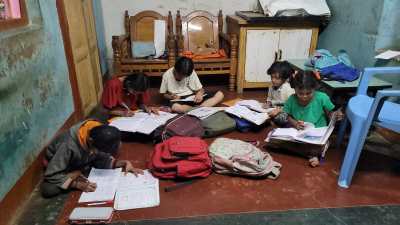World will see 145;capable146; IAF in 7-10 yrs
Air Force Chief Fali Homi Major on Friday said that the world will see a very 8220;capable and different8221; Air Force in the 8220;next 7 to 10 years8221;.

Air Force Chief Fali Homi Major on Friday said that the world will see a very 8220;capable and different8221; Air Force in the 8220;next 7 to 10 years8221;.
During the annual Air Force Day parade media interaction, the Air Force chief on Friday said plans to acquire 126 multi-role combat aircraft MRCA was 8220;on track8221; with technical evaluation of the bids submitted by the six top fighter aircraft manufacturers expected to be completed by this year end and the flight evaluation of the selected lot of aircraft early next year.
He said that Su-30 MKI8217;s were the most potent aircraft in the IAF, adding that a total of 230 of the platforms would join the fleet by 2014 with HAL trying to speed up licensed production of the Russian fighter.
8220;We want the Su-30 MKI licensed production to be a little faster. I am sure we will be able to catch up soon,8221; he added. When asked about the delay in acquiring Su-30 simulators for pilot training, Major said the system was being designed according to IAF needs and hence the delay.
Noting that there were some hitches relating to Sukhoi spares and product support for the HAL8217;s production unit in Nasik, he admitted the delays in the production line, but said currently the IAF was getting about 15 aircraft a year instead of the scheduled 18.
8220;We would like to increase the number of Sukhois produced to 23 aircraft a year. Hence, we have asked for speeding up the production,8221; he said.
The IAF plans to operate Sukhoi aircraft from the Northeast states by end of 2009 and was modernising some select airfield in the region. The Government, he said, has also approved IAF plans to modernise 39 airfields across the country for which global tenders have been issued.
India was also developing a Fifth Generation Fighter Aircraft FGFA jointly with Russians for which an agreement was signed in November 2008, the IAF chief said, pointing out that the FGFA would be a very different aircraft compared to the Sukhois. 8220;Negotiations between the two countries are still going on relating to job share and costing of the FGFA programme. It is an ongoing process,8221; he said.
The IAF was also acquiring 8220;all types of precision-guided missiles8221;, but the challenge was to integrate them on to the aircraft in its inventory, he added.
To strengthen the IAF8217;s VIP Squadron that ensures 8220;secure and safe8221; flight to country8217;s top political leadership including the President and the Prime Minister, India has bought three Boeing Business Jets BBJ for US 225 million, of which one has been delivered and the other two were likely to join the service by January 2009.
Admitting that there was a delay in the IAF8217;s plans to have an airborne warning and control system AWACS bought from Israel, the IAF chief said it was now expected to arrive only by end of January next.
On the newly acquired Advanced Jet Trainers 8216;Hawks8217; from the UK-based BAE Systems, Major said the delivery of aircraft in 8220;fly away8221; condition was nearing completion and the first HAL-manufactured Hawk too has been accepted by the IAF. India has also signed a contract with the US8217; Boeing for six C-130J medium-lift transport aircraft for its Special Forces operations on a turn-key basis, he noted.
Among the other future acquisitions were 80 Mi-17s for which contract would be signed by this year-end, 125 Light Utility Helicopters to replace the Cheetah and Chetak fleet, eight VVIP helicopters and four of its cargo versions for which price negotiations was in progress, and 38 indigenous Advanced Light Helicopter 8216;Dhruv8217; and 16 of its armed versions with a glass cockpit and new 8216;Shakti8217; engines.
- 01
- 02
- 03
- 04
- 05































